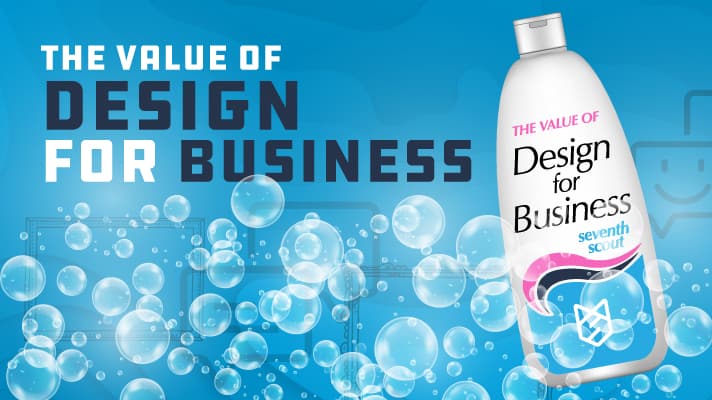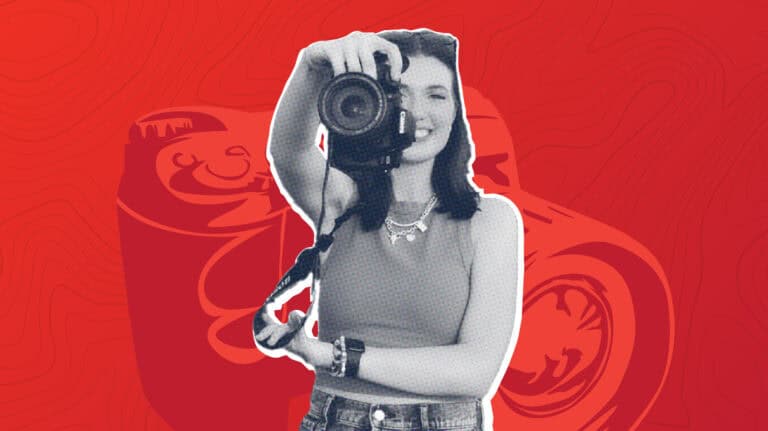What do Napoleon Bonaparte, a dandruff shampoo, and an Austrian-American psychologist have in common? And how on earth do they have anything to do with the value of design for business? That’s what we’re here to discuss today. But first, let’s talk about graphic design. What is graphic design? There are many definitions floating around out there, but here’s one that I particularly like:
Graphic design is the art or profession of visual communication that combines images, words, and ideas to convey information to an audience, especially to produce a specific effect. In other words, graphic design is communication design; It’s a way of conveying ideas through visuals and design.
I personally prefer the term “communication design” over “graphic design”, and not just because that’s what my degree is in. I believe communication design is a more accurate term because it focuses on the true purpose of design: to communicate.
I’d like to share three sayings, two of which I’d wager you’ve heard before, that help to explain the importance of design in business.
“You never get a second chance to make a first impression.” – Head & Shoulders Shampoo
“A picture is worth a thousand words.” – various sources
“One cannot not communicate.” – Paul Watzlawick, Psychologist and Communication Theorist
First Impressions Matter
Show of hands, who remembers those Head & Shoulders shampoo television ads from the eighties and nineties? Well, either way, here are some quick refreshers:
Sure, the big hair, shoulder pads, varsity jackets, and mullets haven’t aged well, but the importance of making a good first impression is timeless.
Whether it’s a logo, a website, or an advertisement, the design and appearance of your brand’s materials play an essential role in the impression your audience develops about you. Think about it: to a person who has no prior experience with your company, your logo (or website, or advertisement) is your company. Those materials are visual representations of your brand and the impression they make on your audience plays a large role in the opinion they form about you.
The design of your materials helps define who you are as a company and a brand. It’s part of what informs the expectations of your audience about your brand. Design sets the tone for how they think about your company and what they will expect from you. Do your brand materials accurately and positively reflect your company? And just as importantly, are they welcoming, engaging, and appropriate for your audience?
Picture This
The exact origin of the “picture is worth a thousand words” axiom is unclear, but it’s something we’ve all heard at least a thousand times. Some say it was derived from the Chinese saying “Hearing something a hundred times isn’t better than seeing it once”, while others attribute it to Napoleon Bonaparte, who said “A good sketch is better than a long speech”
Again, a show of hands, who hasn’t wondered if they could get away with turning in two drawings for a grade on a 1,000-word essay assignment? Just me? Okay. Even so, there’s no denying the importance of visual communication.
The main reason visual communication is so important is based upon how our brains process information. According to research from 3M, human beings process visuals 60,000 times faster than text. Your company’s messaging and content are important, to be sure, but the sheer speed of absorption of visual information is the reason why design is the primary driver of your audience’s first impression of your company and brand.
Visual elements such as photos, graphics, and colors instantly convey feelings and emotions to your audience. Even the appearance of your written messaging is an important aspect of your brand, especially with headlines and headings. The font you choose for your headlines and content will inform the tone and voice of those messages in the minds of your audience.
What Is Your Brand Saying?
“One cannot not communicate” is one of Paul Watzlawick’s five basic axioms in his theory on communication, popularly known as the “Interactional View”. You don’t need to be a scholar of psychology or communication theory to realize the essential truth in this statement. Communication (and just as importantly, intent) is happening all around us, all of the time. Words (written or spoken), sounds, images, body language and facial expressions – each of these is a form of communication. Some are active forms of communication, while others are passive.
That’s where design comes into play. The design and appearance of your brand and its materials are communicating important (though often subtle, and perhaps even unintended) messages to your customers and audience. Companies and brands that take the time and effort to have professionally designed communication materials are investing in the value of making a good first impression on their audience. A unique, thoughtful, and appropriate design sends a clear message that you understand your audience and their needs.
Companies that don’t put effort into the design of their brand communications (for example: picking an “out of the box” website template and slapping their logo maker app-generated logo on it) are unintentionally communicating that they don’t care about or understand their audience and customers. That might not be the case, but since “one cannot not communicate” it’s important to separate intent (good or bad) from the outcome.
Design IS Communication
Now that you know how impactful it can be for your business to have high-quality design, you understand the importance and value of making an investment in design.
Here at Seventh Scout, we have a passion for helping companies and organizations effectively reach their audiences through professional, impactful design. We take the time to understand your mission, your customers, and your unique value propositions. We then craft engaging visual communications that positively and accurately depict your brand and connect you with the audience. Get in touch with us to see how we can help your organization.



